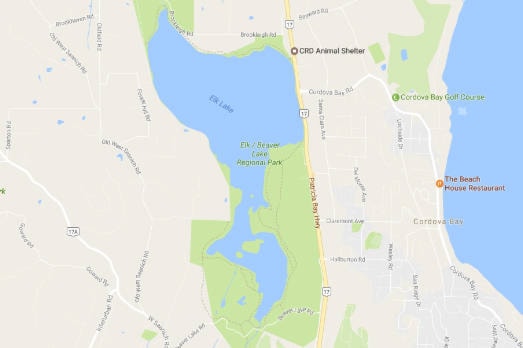A report published last month raises alarm about the state of Saanich’s Elk and Beaver Lakes in describing measures that could end up costing almost two million dollars.
“Overall water quality declining in the lakes is declining and with cyanobacterial blooms increasing in frequency and duration in Elk Lake, the risk to health of humans and pets is rising,” it reads.
Just earlier this month, the CRD closed Beaver Lake for swimming. Notably, the closure coincided with Saanich’s Strawberry Festival.
Capital Regional District (CRD) staff prepared the report as part of efforts to control seasonal blooms of cyanobacteria, also known as blue-green algae (BGA). These naturally occurring blooms have the potential to release cyanotoxins into the water hazardous to people and pets ingesting the water. They also threaten local fish stocks.
The report identifies rising amounts of nutrients (such as phosphorus) as the major culprit behind the rising frequency of blooms.
Accordingly, the CRD board recently approved $40,000 towards an oxygenation system that will pump more oxygen into Beaver Lake, the shallower and smaller of the two joined but largely separate lakes. This system would prevent the release of phosphorus from lake sediments, said Coun. Judy Brownoff, adding that it would be in place next year.
Staff are also investigating measures that would add oxygen to Elk Lake. However its larger size and depth compared to Beaver Lake rule out the use of the system to re-mediate Beaver Lake.
According to the CRD report, the initial purchase, installation, operation and maintenance of an oxygenation system suitable for Elk Lake could end up costing anywhere between $1.3 and $1.8 million over 10 years.
“A business case will further refine costs and look at funding opportunities (such as grants and external funding sources) to reduce the capital cost for the CRD,” it read.
The report suggests that it would be money spent wisely as the lakes constitute the core of the Elk/Beaver Lake Regional Park, the region’s “most heavily-used park,” according to the report. It attracted an estimated 1.46 million visits in 2016 and an estimated 14,000 angler-days per year, it read.
Canada’s national rowing team, the national triathlon team and related users also rely on the lakes. According to the report, they help generate millions in economic activity.
But if the report highlights the economic, ecological and aesthetic benefits of re-mediating the lakes, it also points to some of the potential jurisdictional pitfalls.
The provincial government owns the lake bottom, sediments and water column. Transport Canada on behalf of Ottawa manages activities on the water surface. CRD is responsible for the surrounding park lands. The lakes’ watershed lies mainly within the District of Saanich and Island Health monitors the beaches for recreational health purposes.
An intergovernmental working group (IWG) representing these various interests have met periodically starting in 2015 to discuss the overall state of the lakes.



